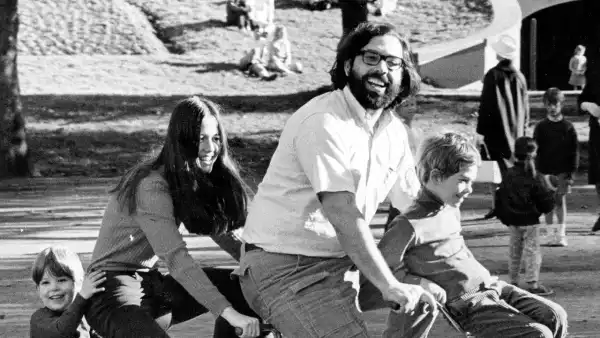Like many uncompromising, creative women, the funk-rock diva Betty Davis is often called a pioneer. The term is a tribute, of course, a way of defining her legacy in terms of the inroads that she made for later artists. Certainly Davis, who released three exquisitely raw, libidinous albums in the nineteen-seventies, can be said to have presaged more recent expressions of black female desire in popular music—for instance, Janelle Monáe’s, in her new album and “emotion picture,” “Dirty Computer.” Still, such legacy narratives can understate past struggle and overstate subsequent progress, as if the past were mere prelude to our more liberated present. A new film about Davis resists that inclination, asking how much Davis paid for her transgressions—she stopped recording in the nineteen-eighties and disappeared (many thought she had died)—and how much further ahead our time might be had she flourished in hers.
Directed by the London-based filmmaker Phil Cox, “Betty: They Say I’m Different” is an impressionistic meditation on Davis’s career and reclusion that combines documentary tropes (rare concert footage, talking heads) with poetic motifs (a symbolic crow, Kabuki dancers). It also covers the basics of Davis’s story: born Betty Mabry in Durham, North Carolina, in 1944, she grew up near Pittsburgh, where her father worked in the steel industry; her mother and grandmother nurtured her love of the blues. At seventeen, she came to New York, where she modelled, studied fashion and acting, and managed a club while pursuing her primary vocation as a songwriter. (She was ambitious: according to Lester Chambers, whose band, the Chambers Brothers, recorded Davis’s ode to Harlem, “Uptown,” in 1967, “She wouldn’t shut up about the fact she had a tune that was perfect for us.”) She exerted an especially strong influence on Miles Davis, whom she married in 1968, when she was twenty-three and he was forty-two. She introduced him to Sly Stone and Jimi Hendrix, and got him to trade his suits for hip leather and scarves; he, in turn, urged her to sing.
Their marriage, while mutually inspiring, was poisoned by Miles’s abuse. Davis left him after a year, and threw herself into her music—mid-tempo avant-garde funk driven by her sexually brazen persona and her vocal shrieks and purrs. (She considered herself “more of a projector” than a singer, she told an interviewer. “I’m into sound.”) The three albums she recorded between 1973 and 1975 featured a Who’s Who of musical greats: the drummer Greg Errico and the bassist Larry Graham, of Sly and the Family Stone; the disco icon Sylvester; the Santana guitarist Neal Schon; the Pointer Sisters. While Davis’s best-known lyrics touted female promiscuity (“Don’t Call Her No Tramp”) and S & M (“He Was a Big Freak”), she also sang about music history, in “They Say I’m Different” and “F.U.N.K.,” and social fatigue, in “70’s Blues.” (Her compositions had alluded to racial discrimination as early as “Uptown,” in which the singer determines to get to Harlem even if “a taxi won’t take me.”) “He Was a Big Freak,” while best remembered for its startling opener—“I used to beat him with a turquoise chain”—displays her deftness as a writer by matching language with role play. “When I was his princess, silk and satin and lace I’d wear for him,” Davis sings, a grammatical inversion that evokes a courtlier courtship tradition. Onstage, she sported a glorious Afro while shouting, strutting, and crouching in thigh-high platform boots and sequinned bikini tops. (She was all business behind the scenes, drinking mineral water and eating rice cakes when others were doing drugs.) Richard Pryor and Muhammad Ali came out to see her. But her career was not a success in conventional terms—radio stations banned her songs, and her record sales were disappointing. After being dropped by her label, Island Records, Davis eventually moved back to Pittsburgh. Decades later, when interviewers asked her what she had been doing, she answered, “I just lived,” or, “Nothing really.”
Several commentators in “They Say I’m Different” speculate about her disappearance, pointing to the death of her father and her battles with the music industry as likely causes. There are also hints of mental illness, and of the intimate abuses that, as the #MeToo movement has revealed, have debilitated countless women. “After we did the first record,” Errico says, “her life seemed like it was changing, and things were getting intense. And then years went on, and she disappeared. I mean, really disappeared. Then, after decades go by, I talked to her, but she was very, very quiet, very withdrawn . . . . So whatever did happen . . . you know, it’s been heavy, it’s been deep.”
Meanwhile, the camera pans through a modest yet meticulous apartment—beige carpet, clear plastic storage bins neatly stacked against the wall. Here, one sees Davis herself—mainly, her manicured hands. She writes in a notebook and lights incense, her robin’s-egg-blue nails and silver cuffs providing hints of lasting glamour. Davis, who is now in her seventies, did not want to be shown in the film (“Nobody wants to be looking at an old woman,” she told Cox), but she collaborated with Cox on a pithy, elliptical narrative, drawn in part from her interviews and song lyrics, which plays in voice-over. “Me and Miles were married in ’68. He got me a limo, and I filled the trash with his suits,” she notes. And, later, more grimly: “I told no one of how Miles was violent . . . . So I wrote and sung my heart out. Three albums of hard funk. I put everything there. But doors in the industry kept closing. Always white men behind desks telling me to change—change my look, change my sound . . . . I needed to ‘fit in,’ or else no contract . . . . I learned that stars starve in silence.”
Davis rehearsing for a gig in San Francisco, in 1975.
Photograph by Nona Hatay / Native Voice Films
She recovers, in reclusion, and the film respects her silence. It does this especially by swerving away from the convention of the latter-day reunion that ends such music documentaries as “The Buena Vista Social Club” and “Standing in the Shadows of Motown.” Four members of Davis’s former band, Funk House, all about her age, meet up in a club and call her. They invite her to play and record again; one of them brightly notes that she could release her own music through social media, without a label. Davis demurs. What could it possibly mean for her to “come back” now? Agreeing to be located but not to be rediscovered, she remains as uncompromising in her solitude as she was at the height of her fame, and the film becomes that rare documentary that makes its subject more, not less, elusive.
Davis is seldom listed among Janelle Monáe’s many influences (Stevie Wonder, Prince, Lauryn Hill), and certainly the younger singer’s high-tech concepts, virtuosic performances, and meticulously produced songs are far removed from Davis’s proto-punk aesthetic. But Monáe, too, is an ambitious child of the working class who left a midsized American city (Kansas City) to develop a fierce alter ego (the rebel android Cindi Mayweather) and to curate a formidable musical crew (the Atlanta-based Wondaland Arts Society); like Davis, she also is closely linked with a visionary male mentor (Prince). The title of Monáe’s 2013 album, “The Electric Lady,” alludes to Hendrix’s “Electric Ladyland,” but it also implicitly cites the coterie of women that inspired Hendrix himself: that group, called the Cosmic Ladies or Electric Ladies, was together led by Hendrix’s lover Devon Wilson and Betty Davis.
Monáe has recently come out as pansexual, and she declared that, with “Dirty Computer,” she is stripping away her android armor to reveal her true self. While that framing severely undercuts the adventurous music she has been creating for more than a decade, she clearly takes her role as a pioneer seriously, even literally. In the gorgeous video for her new song “PYNK,” black women drive a pink Cadillac hovercraft into the masculine, ruggedly individual desert space of the West, feminizing, collectivizing, and moisturizing it by seducing each other. Still, Monáe’s new image as a “free-ass motherfucker” feels no less calculated than her robotic avatar. If Davis’s commitment to her own vision seemed to render her audience’s reactions beside the point, Monáe keeps her eyes trained on the camera. While daring us to be shocked by her skin-baring outfits, raised middle fingers, and multiple F-bombs, she seldom appears to be having much fun.
Monáe is understandably discussed in terms of the future, but her new work also raises the spectre of the past—not only those figures upon whose legacies she builds, but also the obscured artists who, had they succeeded, might have given her even more traction. Especially in light of the erasure of memory that “Dirty Computer” depicts and resists, we might ask how much freer Monáe and her constituents might be if Davis had thrived. How much bolder might they be if not for the ongoing conservatism and historical amnesia that marks every sexually candid or queer black woman as the “only” and “first”—that requires each one to pioneer the way forward all over again?
Sourse: newyorker.com






